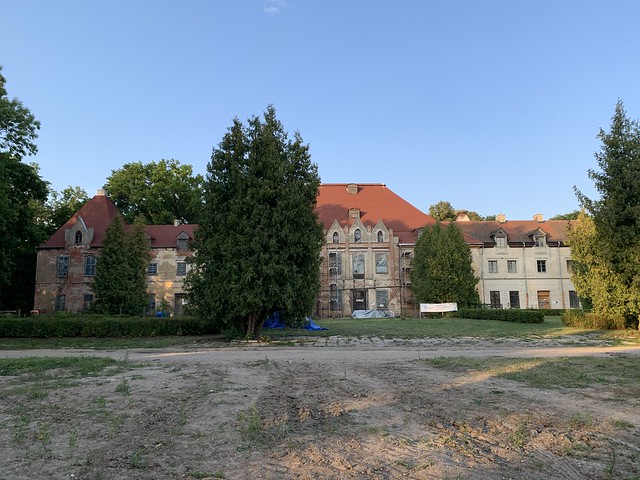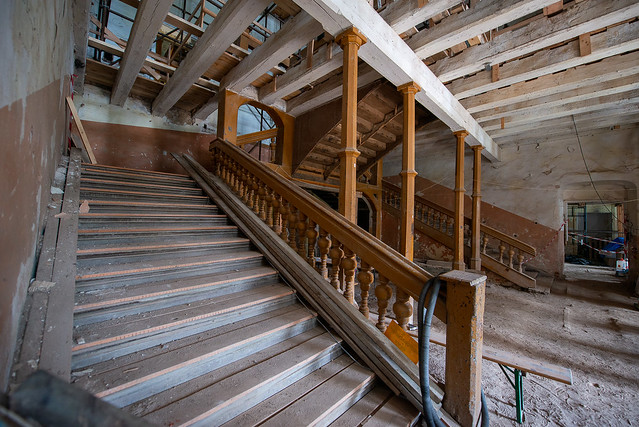Palace in Sztynort, northern Masuria, POLAND
Nestled amid the stunning beauty of the Masurian Lakes, the Palace in Sztynort stands as a cherished destination in Poland, celebrated for its breathtaking vistas and rich history that attracts thousands of visitors each year. It was built between 1689 and 1691, with extensions in the 19th century, by the German noble family Lehndorff after the original building fell victim to the ravages of Crimean Tatars during the Second Northern War.
Lying just 17km from Adolf Hitler’s headquarters “Wolfsschanze”, during WWII the Palace in Sztynort had become a nest of German military resistance to Hitler and his Nazi regime. The last heir of the Palace in Sztynort, Count Heinrich Lehndorff, paid with his life for his participation in the failed attempt on 20 July 1944 to assassinate Hitler at the Wolfsschanze.
The heritage value of the Palace in Sztynort lies in the preservation of its original aesthetic identity since its construction. This characteristic transforms the palace into a time machine monument, giving present-day visitors and occupants a rare glimpse into the architectural splendour of the 17th century. The palace stands as an artistic representation of its era, boasting 1,500 square metres of meticulously painted ceiling boards. Each brush stroke and colour hue encapsulate the creative spirit of the time, turning the building into a canvas that narrates the stories of its past.
The history and strategic location of the Palace in Sztynort make it crucial in the broader context of Europe’s geostrategic reordering. Despite the palace’s weathered appearance, it remains a focal point for tourism and regional development, instilling a sense of optimism for the future. Yet urgent action is required to ensure its preservation. The emergency securing phase is ending and the focus is now on its restoration, requiring a total budget of around 30 million euros.
The significance of the Palace in Sztynort has already transcended its geographical boundaries, reaching the attention of governmental authorities in both Poland and Germany. The palace is under the ownership of the Polish-German Foundation for the Protection of Monuments based in Warsaw (Polsko-Niemiecka Fundacja Ochrony Zabytków Kultury). However, the success of the restoration project is under threat due to its complex management structure and the need for substantial financial support.
The coordination of the project currently lies within the Steinort Working Group, led by the German Consul General in Gdansk, Cornelia Pieper, whose dedication has been instrumental in advancing the project. However, the fluctuating engagement and enthusiasm in Berlin and Warsaw influenced by evolving political situations, adds an element of volatility. To counter the threat, efforts are underway to establish a stable organisational structure and expedite the restoration process.
The inclusion in 7 Most Endangered Programme is poised to significantly enhance the site’s visibility and elicit robust support at European level. This narrative underscores the enduring legacy of the Palace in Sztynort, not merely as a relic frozen in time but as a dynamic force connecting the past, present, and future.
The nomination to the 7 Most Endangered Programme 2024 was made by an individual member of Europa Nostra from Luxembourg with Lehndorff-Gesellschaft Steinort e.V. based in Berlin. The nominator envisions utilising the Palace in Sztynort primarily for cultural activities, intending to transform it into a centre for hosting exhibitions and artistic festivals, educational activities and scientific exchanges: Academia Masuria with Gallery Lehndorff as a “Forum for European Dialogue”. Over the past decade, the nominator has actively undertaken measures and established networks to facilitate the restoration of the site. The nominator seeks increased political support to present Steinort Palace as a collective European heritage and a symbol of reconciliation among nations.
The Advisory Panel of the 7 Most Endangered Programme stated: “The geopolitical location of the Palace in Sztynort could make it a vital European institution to promote and support democracy, as a monument symbolic of reconciliation and understanding.”




